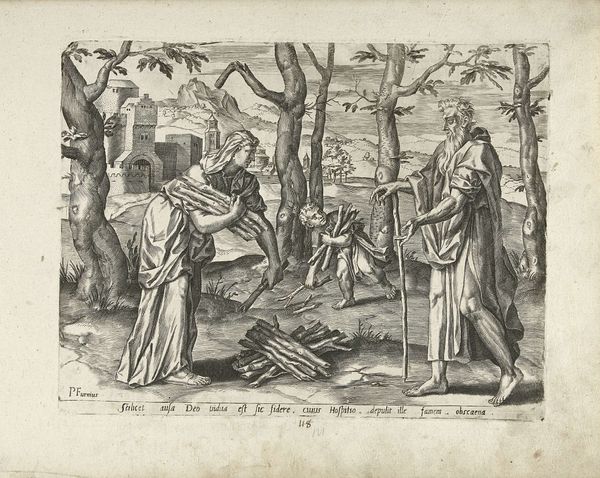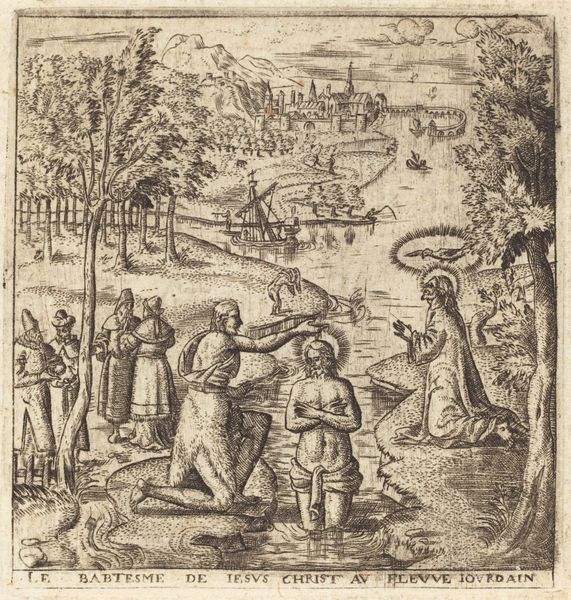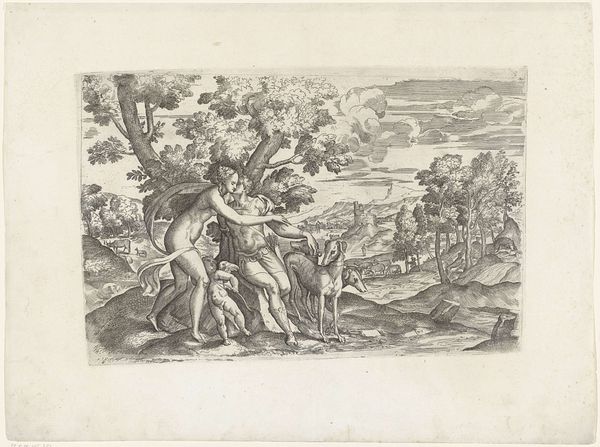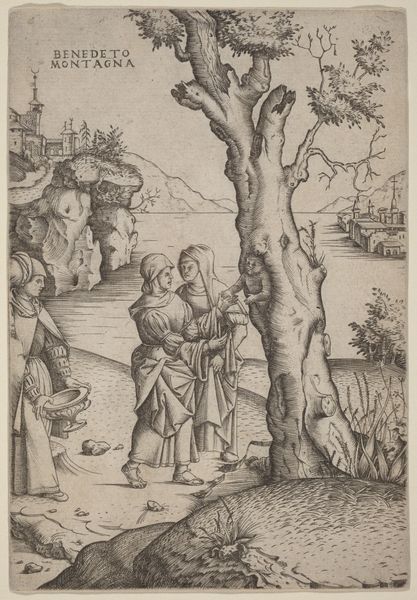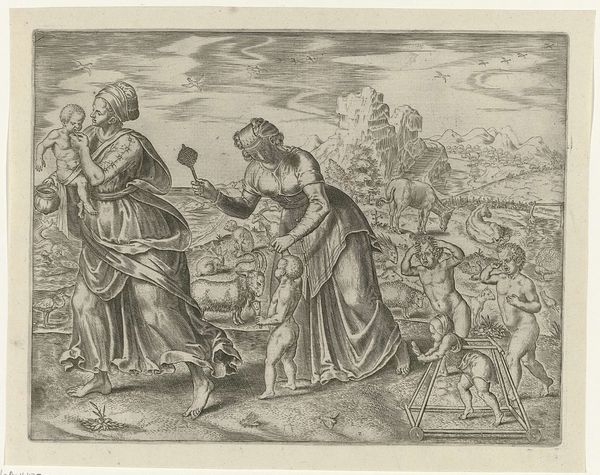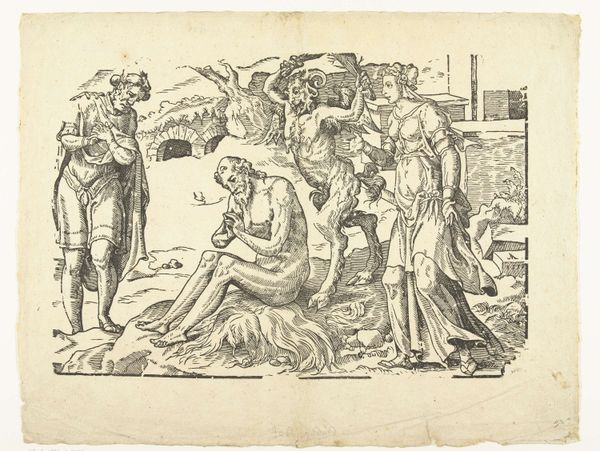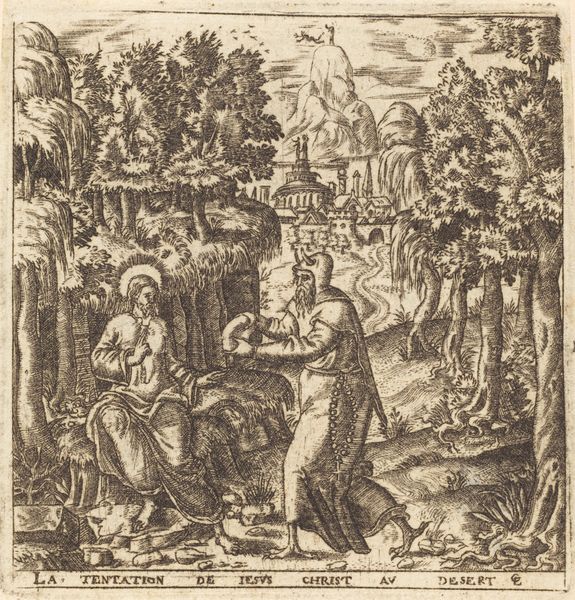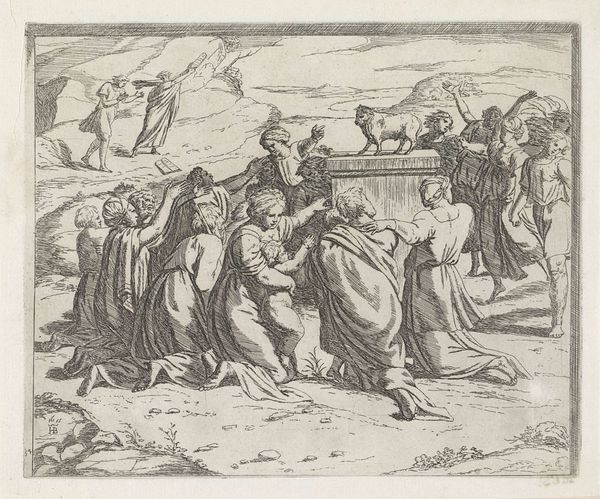
print, engraving
#
narrative-art
# print
#
landscape
#
northern-renaissance
#
engraving
Dimensions: height 214 mm, width 276 mm
Copyright: Rijks Museum: Open Domain
Pieter Jalhea Furnius created this engraving, "Elia gevoed door raven", sometime between 1575 and 1610. The print illustrates a scene from the Old Testament where God commands ravens to feed the prophet Elijah, who is in hiding. The imagery here is fascinating. Notice how Elijah is placed in a detailed landscape, a typical Netherlandish convention. But, it's the presence of the ravens that I find most telling. In the 16th century, ravens were often seen as unclean and ominous, yet here they are, divinely appointed. This inversion of social norms—using the ‘impure’ to carry out God’s work—might subtly critique the established religious institutions of the time. To fully understand this work, one needs to delve into the religious and political climate of the Netherlands during the late 16th century. We can research popular religious beliefs, examine how biblical stories were being reinterpreted, and explore the extent to which artists were willing to challenge religious authority. It’s through this contextual understanding that we can begin to appreciate the subversive potential of this image.
Comments
No comments
Be the first to comment and join the conversation on the ultimate creative platform.
